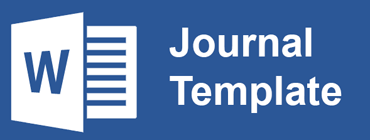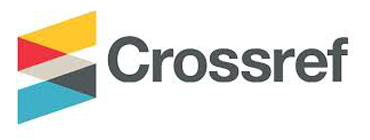THE STUDENT LEXICAL ERRORS IN WRITING SPOOF ESSAY AT ELEVENTH GRADE OF YAYASAN ISLAMIC CENTER NORTH SUMATERA
Abstract
The purpose of this study was to determine the student Lexical Errors in Writing Spoof Essay at Eleventh Grade of Yayasan Islamic Center Sumatera Utara in academic year of 2020/2021. To find out what errors in writing spoof essay can occur and to find out how and why these errors can occur in student writing spoof essays. The focus of this research is Lexical Errors in Writing Spoof Essay at Eleventh Grade. The method used in this research is descriptive qualitative. The research data was carried out on essays written by students. The steps for error analysis are collecting data from student writing essay, identified and classified the errors contained in the lexical errors in writing spoof essays. The data analysis process is described based on Dulay in Kuntjara (2013: 2). From the research results it can be seen that the errors made by the students in writing are omission, addition, misformation, misordering, misspelling, semantically. This error can occur due to various processes based on the type of error, including errors that can occur due to L1 to L2 influence, intra- language disorders, limited knowledge of English grammar, lack of mastering vocabulary in English, and errors in understanding the meaning of words that are almost similar the pronunciation and writing in English.
Keywords: Spoof Essay, Writing, Lexical ErrorsFull Text:
PDFReferences
Ali, A.Y. (2004). The Meaning of the Holy Qur’an, 9th edition. Beltsville, Maryland: Amama Publications.
Arikunto, S. (2002). Metodologi Penelitian Suatu Pendekatan Proposal. Jakarta: PT. Rineka Cipta.
Blanchard, Karen and Root Christine. (2004). Ready to Write More. From Paragraph to Essay: (Second Edition). New York: Longman Nurgiyantoro, Burhan. 2001. Penilaian dalam Pengajaran Bahasa dan Sastra Indonesia. Yogjakarta: BPFE.
Brown, H Douglas. (2004). Language Assessments: Principles and Classroom Practices. New Jersey: Prentice Hall Regent.
Corder, S.P. (1974). Error Analysis, In Allen, J.L.P. and Corder, S.P. (1974).
Techniques in Applied Linguistics. Oxford: Oxford University Press.
Dagneaux, E., Denness, S. and Granger, S. (1998). “Computer-aided error analysis” in System 26: 163-174.
Dulay, H., Burt, M., & Krashen, S. D. (1982). Language two. New York: Oxford University Press.
Emmaryana, F. (2010). An analysis on the grammatical error in students' writing. Skripsi. Jakarta, Indonesia: English Education Department Faculty of Tarbiyah and Teachers' Training "Syarif Hidatyatullah" State Islamic University. Tarigan, HG. 1994. Menulis Sebagai Suatu Keterampilan Berbahasa. Bandung:Aksara.
Fithriani, R. (2018). Cultural influences on students’ perception of written feedback in l2 writing. Journal of Foreign Language Teaching and Learning, 3(1), 1-13.
Gass, S. M., & Selinker, L. (2008). Second language acquisition: An introductory course (3rd ed.). New York, NY: Routledge.
Gay, L., Mills, G. & Airasian, P. (2006) Educational research competencies for analysis and applications. 8th ed. New Jersey, Pearson.
Haris, D.P. (1969). Testing English as a Second Language. New York: McGraw Hill Book Company.
Harmer, J. (2001). The Practice of English Language Teaching. Edinburgh.
Longman. 2007. The Practice of English Language Teaching. Fourth edition. Malaysia : Longman Pearson Education Limited
Hawkey, R. and Barker, F. (2004). “Developing a common scale for the assessment of writing” in Assessing Writing, 9: 122.
Healey,p. (2010). Making better Places. The planning project in the twentyfirst century. London: Palgrave Macmillan.
Hemchua, S., & Schmitt, N. (2006). An Analysis of Lexical Errors in the English Compositions of Thai Learners. Bangkok: Srinakharinwirot University and The University of Nottingham.
Jackson, Howard. (2005). Good Grammar for Students. London: Sage Publication
James, C. (1998). Errors in language learning and use. London: Longman.
J. Moleong, Lexy. (2000). Metode Penelitian Kualitatif. Remaja Rosdakarya; Bandung.
Kasihani, K.E. (2007). English for Young Learner. Jakarta: Bumi Aksara
Keller, Mario. (1998). An Introduction to Literary Studies (3rd revised edition).
USA and Canada: Routledge.
Limenka, P. E., & Kuntjara, E. (2013). Grammatical Errors in The Esssays Written by Fourth Semester Students of English Departement. Teaching English as Second Language English Journal, 25
Llach, Maria Pilar Agustin. (2005). The Relationship of Lexical Error and their Types to the Quality of ESL Compositions: An Empirical Study. Universidad de la Rioja: Unpublished Thesis.
Lofland dan Lofland dikutip oleh Dr.Lexy J Moleong.(2006). Metode Penelitian Kualitatif, bandung : Rosdakarya.
Miles, Mathew B., dan A. Michael Huberman. 1994. An Expanded Sourcebook: Qualitative Data Analysis. London: Sage Publications.
Meyers, Alan. (2005). Gateways to Academic Writing: Effective Sentences, Paragraphs and Essays. New York: Longman McMillan, Kathleen and
Weyers, Jonathan. 2007. How to Write Essay and Assignments. England: Pearson
Moleong, Lexy. (2002). Metodologi Penelitian Kualitatif. Bandung: PT. remaja Rosdakarya.
Ningsih, Surya Endang. (2015). An Analysis of Grammatical Errors of Pronoun Found in Students Essay (A Study of the Fourth Semester Students of English Department of STAIN Batusangkar Register in 2014/2015 Academic Year). Unpublished Thesis.
Richard, Jack C and Willy A Renandya. 2002. Methodology in Language Teaching: An Anthology of Current Practice. Cambridge University.
………, J.C. (ed). 1973. Error Analysis. London: Longman.
Sugiyono. (2014). Metode Penelitian Pendidikan Pendekatan Kuantitatif, Kualitatif, dan R&D. Bandung: Alfabeta.
Syafaruddin,dkk. (2013) Panduan Penulisan Skripsi. Institut Agama Islam Negeri Medan.
Ur, Penny. (1999). A Course in Language Teaching. Cambridge: Cambridge University Press.
Wahidi, Rahmat. (2009). Text Forms and Features: A Resource for Intentional Teaching. Jakarta: Umbrella Corporation.
Refbacks
- There are currently no refbacks.

This work is licensed under a Creative Commons Attribution-NonCommercial-ShareAlike 4.0 International License.
INDEXING
Bright Vision by UIN Sumatera Utara Medan is licensed under a Creative Commons Attribution-NonCommercial-ShareAlike 4.0 International License.
Based on a work at http://jurnaltarbiyah.uinsu.ac.id/index.php/brightvision.









